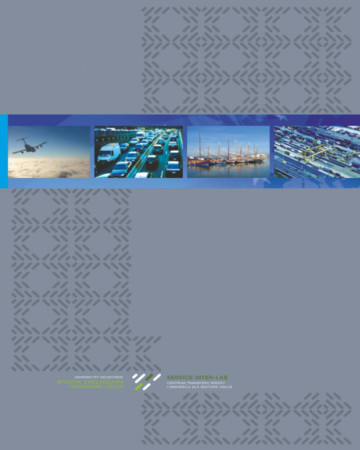
ISSN: 1644-275X
eISSN: 2353-3005
OAI
DOI: 10.18276/ptl.2019.46-02


Issue archive /
nr 2 (46) 2019
ZRÓWNOWAŻONY ROZWÓJ TRANSPORTU KOLEJOWEGO W POLSCE
(SUSTAINABLE DEVELOPMENT OF RAIL TRANSPORT IN POLAND)
| Authors: |
Marcin
Rabe
Centrum Zarządzania w Energetyce, Uniwersytet Szczeciński |
| Keywords: | railway transport sustainable development |
| Data publikacji całości: | 2019 |
| Page range: | 9 (19-27) |
| Klasyfikacja JEL: | Q10 |
Abstract
The aim of the study is to show the importance of railway transport infrastructure as an element of sustain-able development of the country. The study presents the state of railway transport in Poland and the anal-ysis of the assumptions of the Sustainable Transport Development Strategy Project until 2030, addressed to consultations by the Ministry of Infrastructure on 9 November 2018. The research results presented in the study were conducted using the representative method in accordance with the provisions of Regulation (EU) No 70/2012 of the European Parliament and of the Council of 18 January 2012 on statistical reports. In 2017, a total of 239.5 million tons of cargo was transported by rail, ie by 7.6% more than in 2016. Al-though research results from year to year are increasingly improved by rail transport, however, they can not be fully satisfying. The share of rail freight transport should be much larger. The draft of the Strategy for Sustainable Transport Development until 2030 assumes an increase in road transport by a minimum of 196 million tons in 2015–2030, while railway transport increases by at least 30 million tons in 2015–2030, which is 6.5 times less than in road transport. Balancing the costs of railway infrastructure with the car in-frastructure can only slightly to improve the competitiveness of the railways. Therefore, it is indispensable to undertake such activities unrelated to rail transport charges, which will improve the competitiveness of rail transport in relation to road transport.
Download file
Article file
Bibliography
| 1. | Antonowicz, M. (2017). Kolej musi wpisywać się w założenia polityki zrównoważonego rozwoju. Kurier Kolejowy, 26 października. |
| 2. | Barcik, J, Czech, P. (2010). Sytuacja transportu kolejowego w Polsce na przełomie ostatnich lat – Cześć 2. Zeszyty Naukowe Politechniki Śląskiej, 68, 13–18. |
| 3. | Bujak-Szwaczka, B., Kolas, P. (2010). Rozwój zrównoważony. Warszawa: Ministerstwo Rozwoju Regionalnego. |
| 4. | GUS (2018). Transport – wyniki działalności w 2017 r. Warszawa – Szczecin: GUS. |
| 5. | Guszczak, B. (2014). Rozwój transportu kolejowego w Polsce na przestrzeni ostatnich lat. Logistyka, 3, 2293–2303. |
| 6. | Kościk, B. (2007). Bioenergetyka podkarpacka. Jarosławiec: Państwowa Wyższa Szkoła Zawodowa. |
| 7. | Koźlak, A. (2010). Ekonomika transportu, teoria i praktyka gospodarcza. Gdańsk: Wydawnictwo Uniwersytetu Gdańskiego. |
| 8. | Nowak, I., Zielaskiewicz, H. (2009). Makrologistyka, Logistyka, 5. |
| 9. | OECD (2011). Towards Green Growth. Paris: OECD. |
| 10. | ONZ (2015). Przekształcanie naszego świata. Agenda na Rzecz Zrównoważonego Rozwoju – 2030, ONZ |
| 11. | Pichola, I. (2012). Wizja zrównoważonego rozwoju dla polskiego biznesu 2050. Ministerstwa Gospodarki i Forum Odpo-wiedzialnego Biznesu. |
| 12. | SRT (2018). Projekt Strategii Zrównoważonego Rozwoju Transportu do 2030. Ministerstwo Infrastruktury, 9 listopada 2018. |
| 13. | The Global Competitiveness Report 2009–2010 (2010). Geneva: World Economic Forum. |
| 14. | Żak, J. (2009). Podstawowe obszary działań logistycznych. Transport. W: D. Kisperska-Moroń, S. Krzyżaniak (red.), Lo- |
| 15. | gistyka. Poznań: Instytut Logistyki i Magazynowania. |